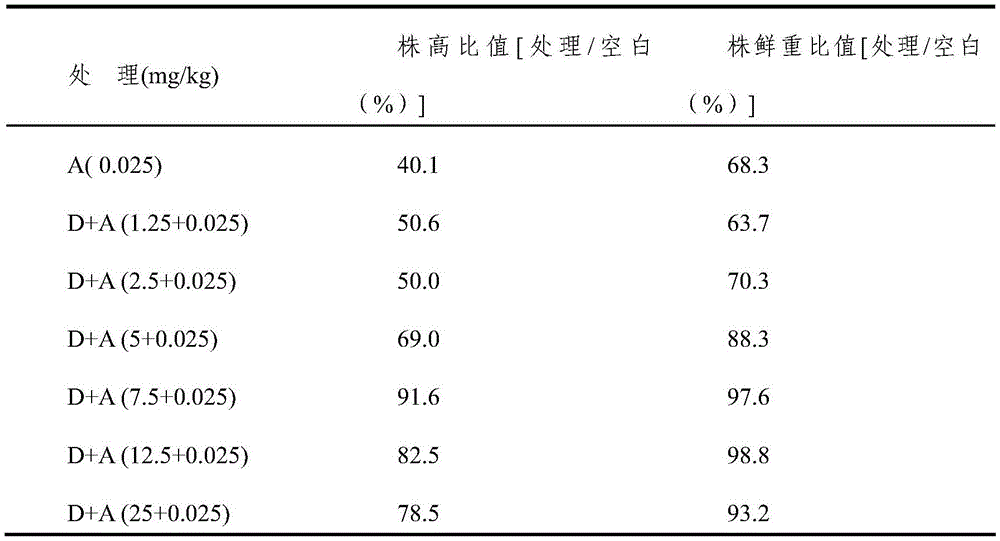Application of Angelica pubescens Maxim. f. Biserrata Shan et Yuan extract in reducing of phytotoxicity of herbicide to crops
A technology of extracts and herbicides, applied in the field of application of lovage extracts as safeners in protecting crops from herbicide damage
- Summary
- Abstract
- Description
- Claims
- Application Information
AI Technical Summary
Problems solved by technology
Method used
Image
Examples
Embodiment 1
[0025] This example relates to the laboratory test of the extract of lovage in reducing the toxic effect of the amide herbicide acetochlor on rice
[0026] 1) Preparation of Radix Lovosa Extract: Grind the dried root and stem of Rhizoma Rhizoma into powder, pass through a 100-mesh sieve; weigh 100g of Rhizoma Rhizoma Rhizoma, use 95% ethanol as the extraction solvent, reflux extract in a water bath at 90°C for 6-8 hours, concentrate Obtain 20g paste extract;
[0027] 2) Pretreatment of the lovage extract: Dissolve 0, 1.25, 2.5, 5, 7.5, 12.5, 25 mg / kg of the lovage extract and 0.025 mg / kg of the herbicide acetochlor in 0.5 mL of ethyl acetate, respectively, Add water to prepare a mixed solvent, then add 0.1g Tween-80 to disperse;
[0028] 3) The effect of the chemical agent on the crops: the tested rice is Jinyou 207, which has been sterilized by sodium hypochlorite before use, and the soil is sterilized and dry soil free from pesticides and other chemical substances. Weigh 2...
Embodiment 2
[0035] Barrel Planting Test of the Extract of Lovola in Removing the Toxicity of Acetochlor to Rice
[0036] Acetochlor: 900g / L acetochlor EC
[0037] Rice for testing: Jinyou 207
[0038] Select a paddy field that has not been applied with acetochlor, and divide the area into 20m 2 district. The rice seeds are sown in plots after germination, and treated with pesticides when the seedlings grow to the one-leaf stage. The treatment method is poisonous soil method, and the dosage is 1g of acetochlor per mu. The phytotoxicity could be observed 4 days after the application, and the phytotoxicity was obvious after 1 week, showing that the plants were dwarfed, and the plant height was significantly lower than that of the untreated rice at the same growth stage. After 6 weeks, it can be clearly found that compared with the untreated rice at the same growth stage, the number of tillers is less. However, 1 g of acetochlor and 200 g / mu of lovage extract per mu were mixed with soil, ...
PUM
 Login to View More
Login to View More Abstract
Description
Claims
Application Information
 Login to View More
Login to View More - R&D Engineer
- R&D Manager
- IP Professional
- Industry Leading Data Capabilities
- Powerful AI technology
- Patent DNA Extraction
Browse by: Latest US Patents, China's latest patents, Technical Efficacy Thesaurus, Application Domain, Technology Topic, Popular Technical Reports.
© 2024 PatSnap. All rights reserved.Legal|Privacy policy|Modern Slavery Act Transparency Statement|Sitemap|About US| Contact US: help@patsnap.com








